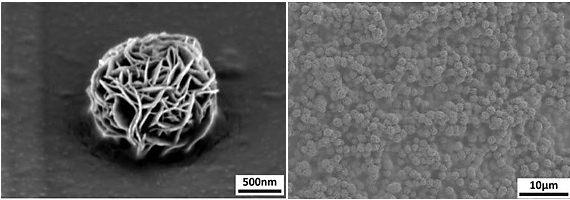

Researchers at Cornell University have somewhat accidentally created a strange new kind of metamaterial that flows like a liquid metal but also remembers its shape. In the presence of water, the liquid metamaterial snaps back into the form of its original container–a property that could have significant applications in treating wounds and beyond.
The material could be infused with drugs, then shaped to fit perfectly inside a wound. “When a drug can flow into a cavity as a liquid and then conform to the shape of the cavity and stay there as a solid (gel), it offers unprecedented opportunities [in the] delivery of drugs,” researcher Dan Luo says in an email.
The material is actually a hydrogel, one of those matrices of organic molecules that are filled with empty spaces. They are among the lightest materials we know of. Hydrogels have been touted as the next big thing on many frontiers, including drug-delivery schemes in which their extra real estate is used to hold pharmaceuticals that are released over time as the hydrogel dissolves.

The hydrogel created by the Cornell team is made of synthetic DNA–snippets of complementary coding that snap together to form complete strands just like the real, biologically created stuff. By coding them in certain ways, researchers can conjure different shapes and structures, and by mixing synthetic DNA with enzymes that catalyze self-replication, the Cornell team was able to get the material to extend itself into long chains, creating a bundle of DNA-based hydrogel.
The hydrogel flows like a liquid, but the team found that when they introduced it to water it returned to the the shape of the container in which it was originally formed, a kind of shape memory that was not part of its intended design. And they’re not exactly sure how it works. It could be the first organic metamaterial with “mechanical meta-properties.”
That’s intriguing on its own, but more tantalizing are the potential applications for a hydrogel with shape memory that can be triggered on demand. Such materials could be designed for very specific medical conditions, especially when blended with 3-D imaging technologies.
“After surgical removal of solid tumors, a key challenge is to kill the remaining cancerous cells that might spread afterwards,” Luo says. “A conforming gel after flowing into the cavity will have much more contact surfaces while at the time stay-put there. This will result in a more effective sustained release of drugs.”
But that’s not the only possible application. “In addition to the drug delivery, many more applications can be envisioned for different fields such as diagnostics, bio-separations and processings,” Luo says. “The potential will be significantly expanded when one thinks about combining other materials with our DNA metagel. Other materials can be gold nanoparticles, proteins, etc.”
It’s all kind of T-1000, but very, very interesting to think about.
